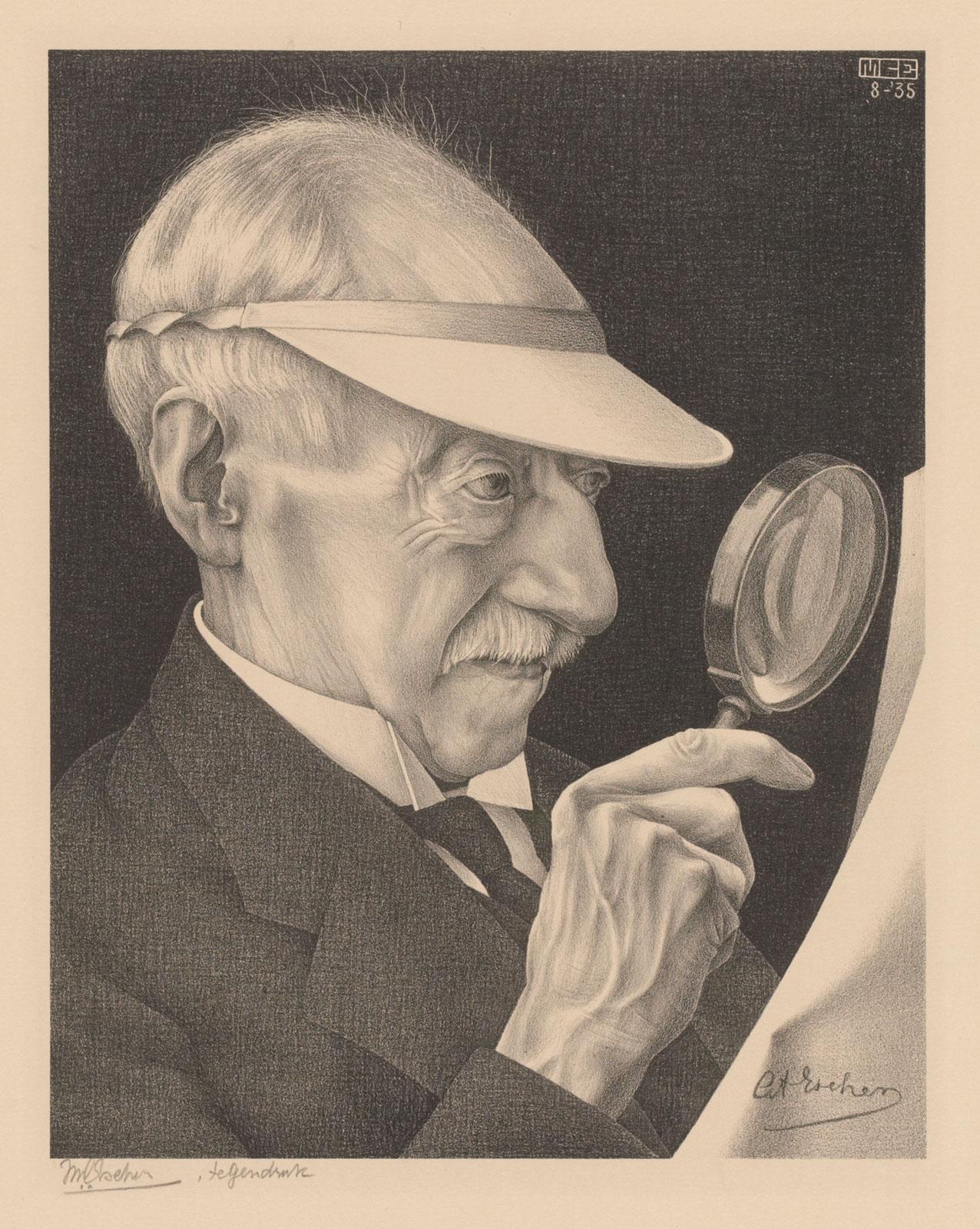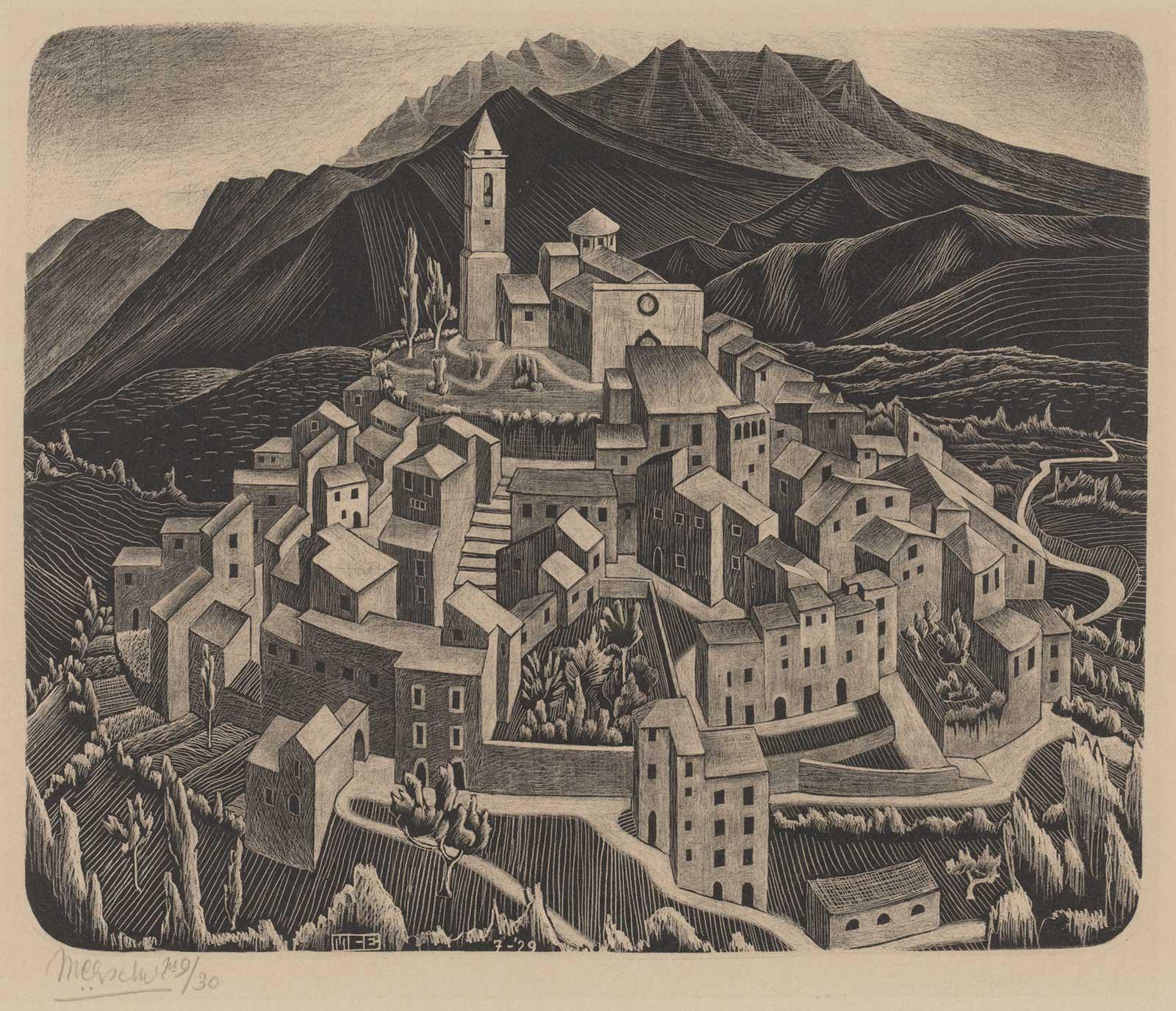

Lizards had fascinated him for quite some time, but in the summer and autumn of 1956, Escher was particularly occupied with them. This fascination came not so much from the behaviour or way of life of these creatures, but from their distinctive form. It namely lent itself very well to being used for the purposes of creating tessellations. In that respect, a lizard (or salamander) interested him as much or as little as birds and fish did. These three animal groups are by far the most common in his work, but they owe that status purely to their form.
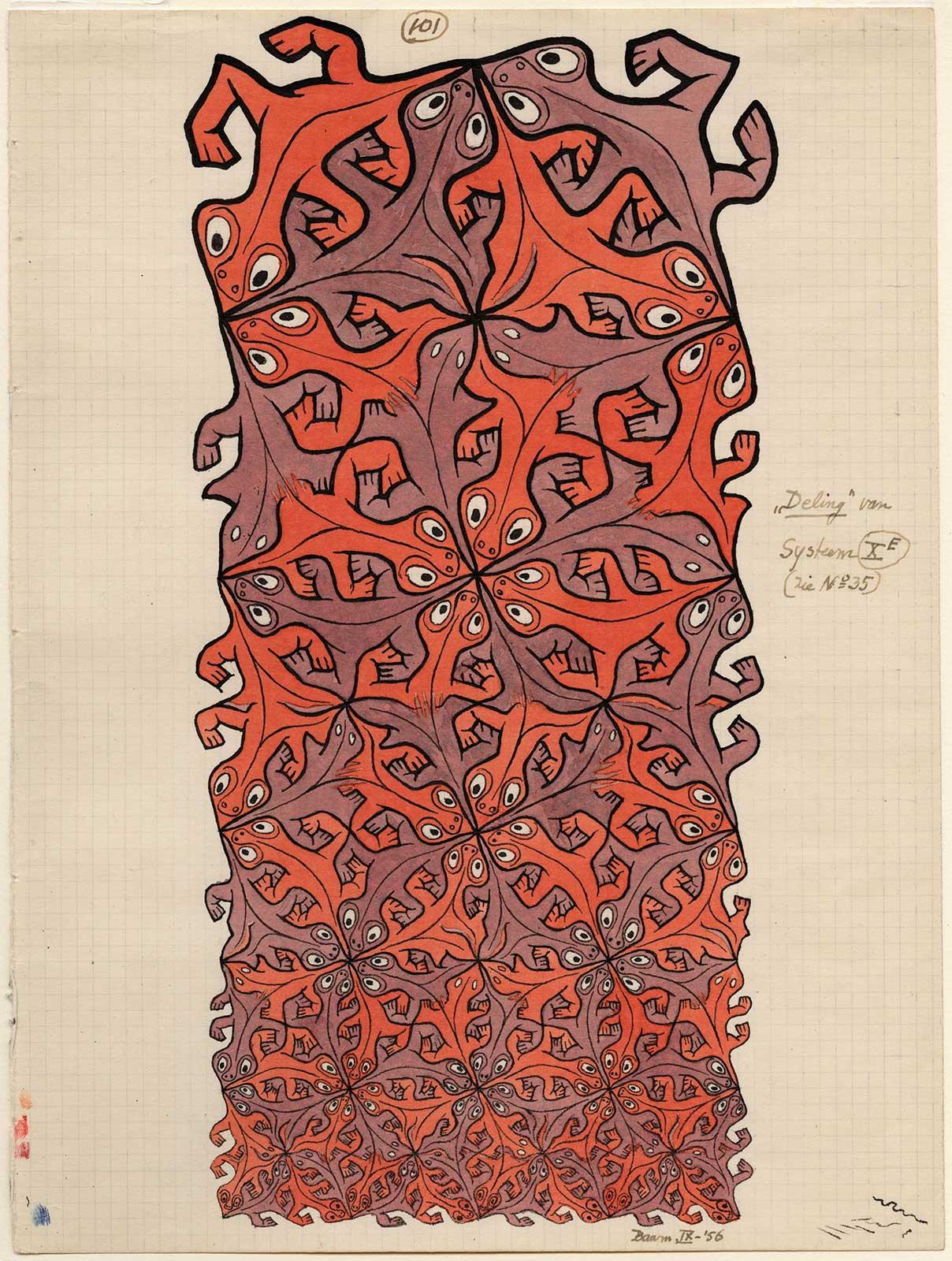
In the case of the lizard, this form occurs in a number of main variants:
- The one in Development I (with the head turned sideways, showing just one eye)
- The one in Development II and Reptiles (the angular version with the eyes on top and the hind legs pointing backwards)
- The one in Division and Smaller and smaller (more fluid with round eyes and all legs pointing forward).
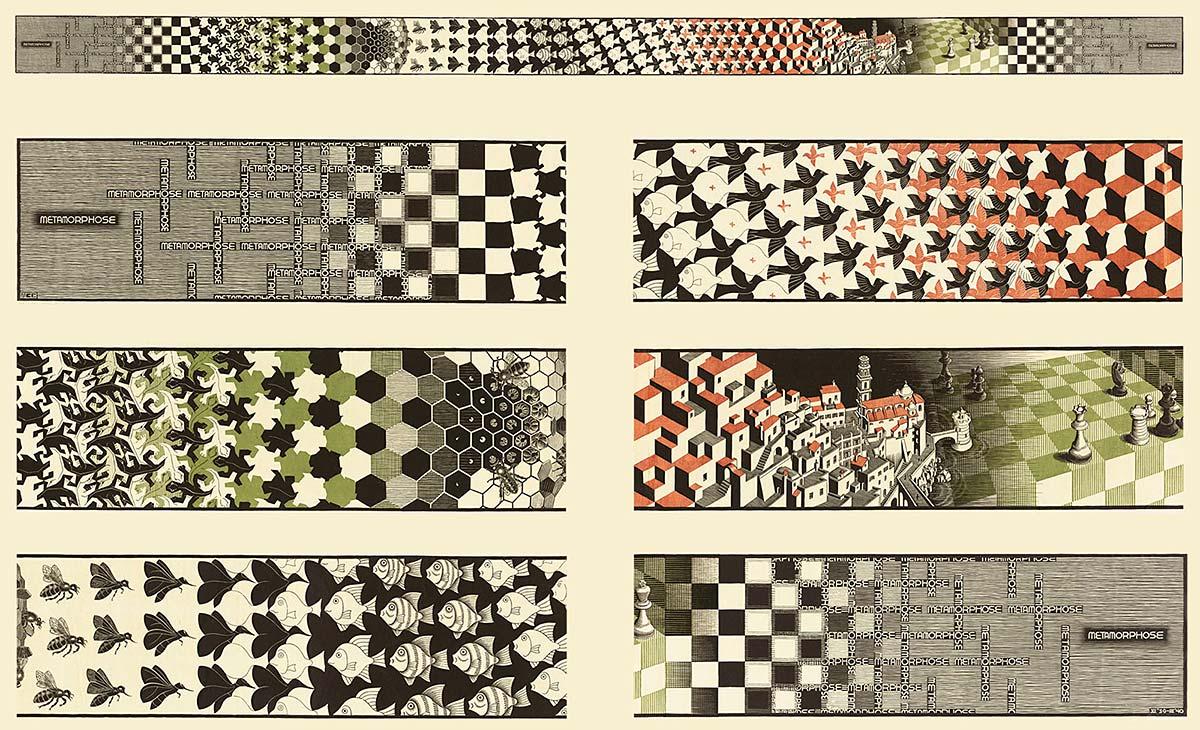
Metamorphosis II and Metamorphosis III both feature variants one and two. In addition, Escher invented a number of lizard variants that can be found in his notebooks with regular divisions of the plane, but he didn't use them in prints.
In July 1956, Escher worked on Division, in September on a drawing in which the same lizards become ever smaller, and in October he translated this drawing into the woodcut Smaller and smaller. In May 1957, he would return to the form again when he produced a variant on the drawing for his book Regular Division of the Plane. All these works feature a variant of the third type of lizard.
Drawing no. 101 from September 1956 is an adaptation of drawing no. 35, from July 1941. In it, the lizards are repeated one by one, in two different colours. In drawing 101 and in Division and Smaller and Smaller, Escher made the lizards shrink by dividing and halving them. In the first works, he chose to split the lizards, interrupting the black line at the points where they overlap. In Smaller and Smaller, he has found a perfect system in which the animals exist and divide independently without overlap.
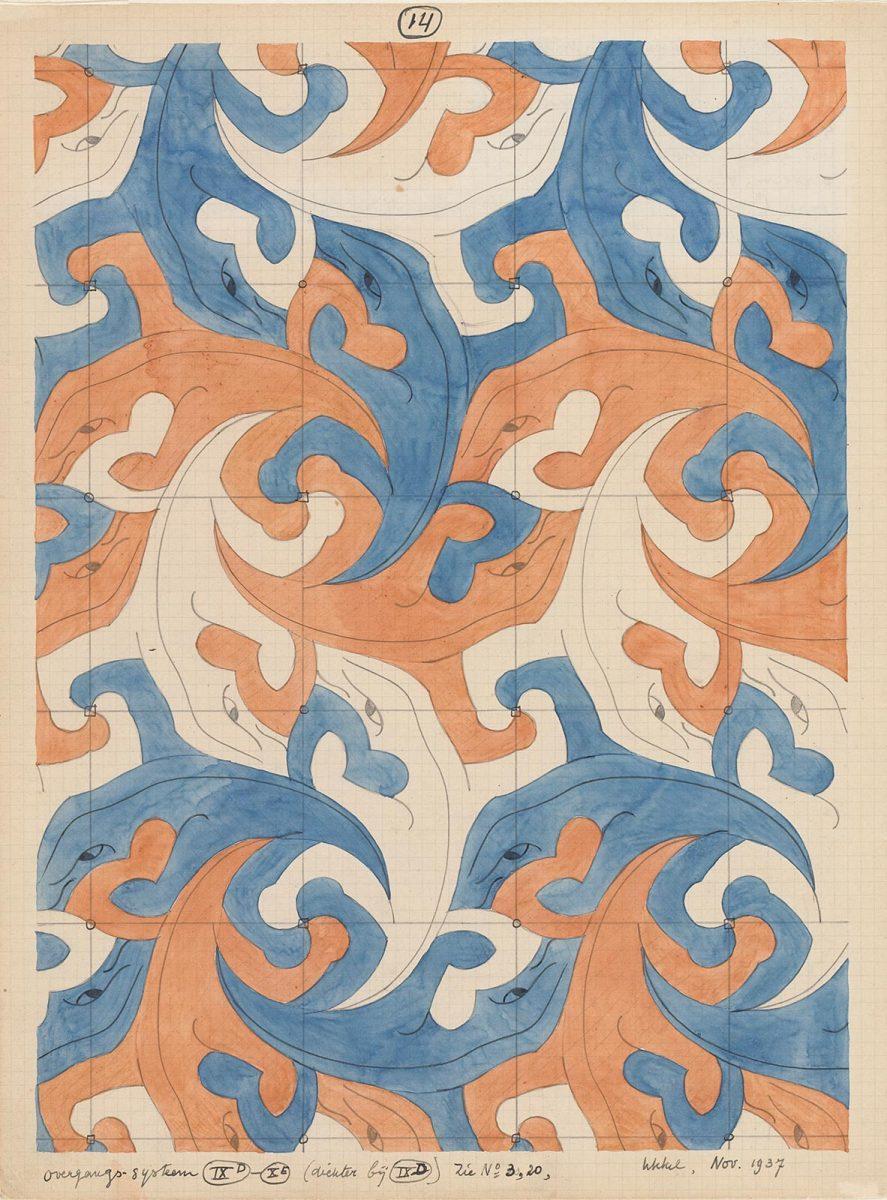
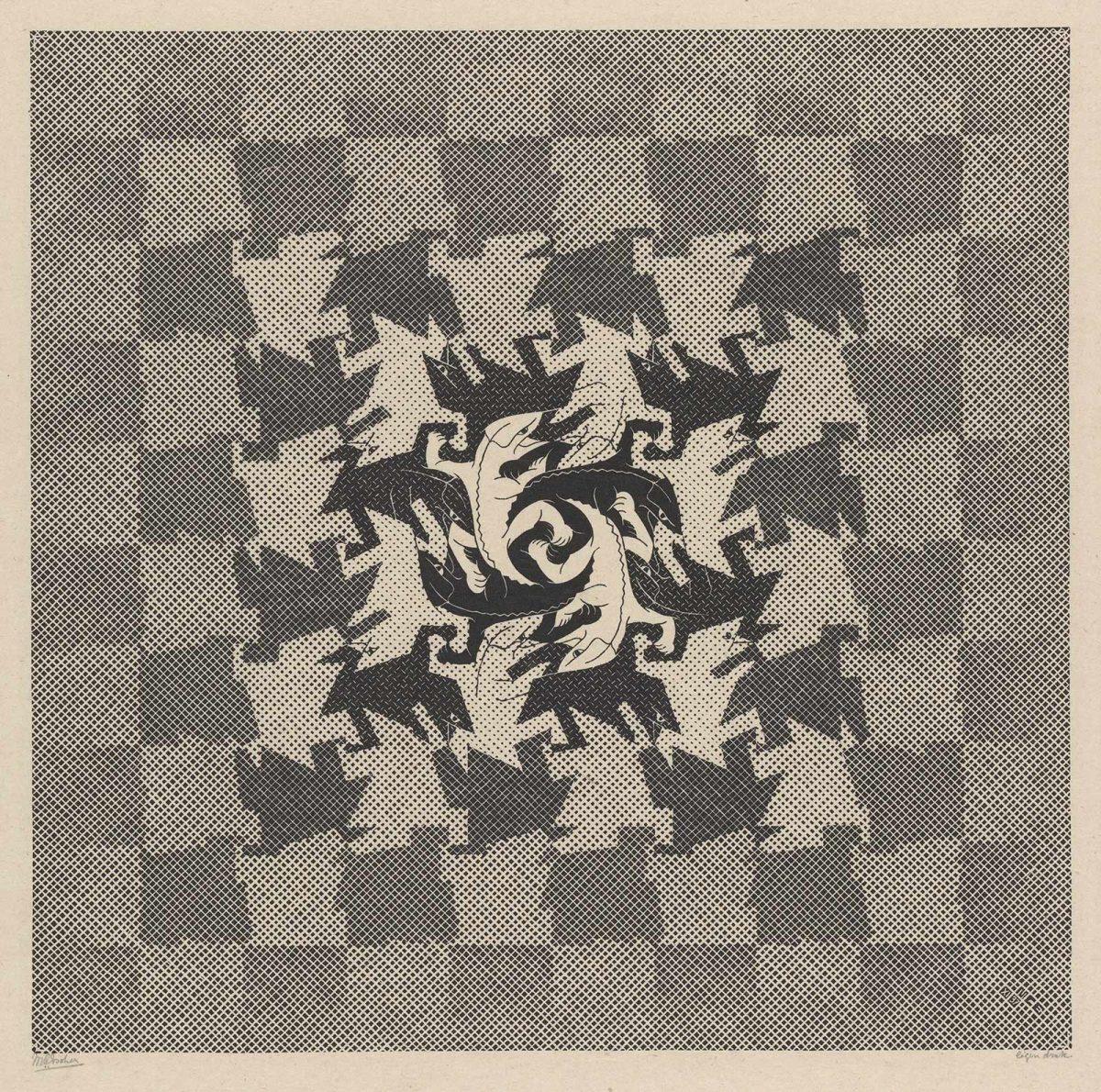
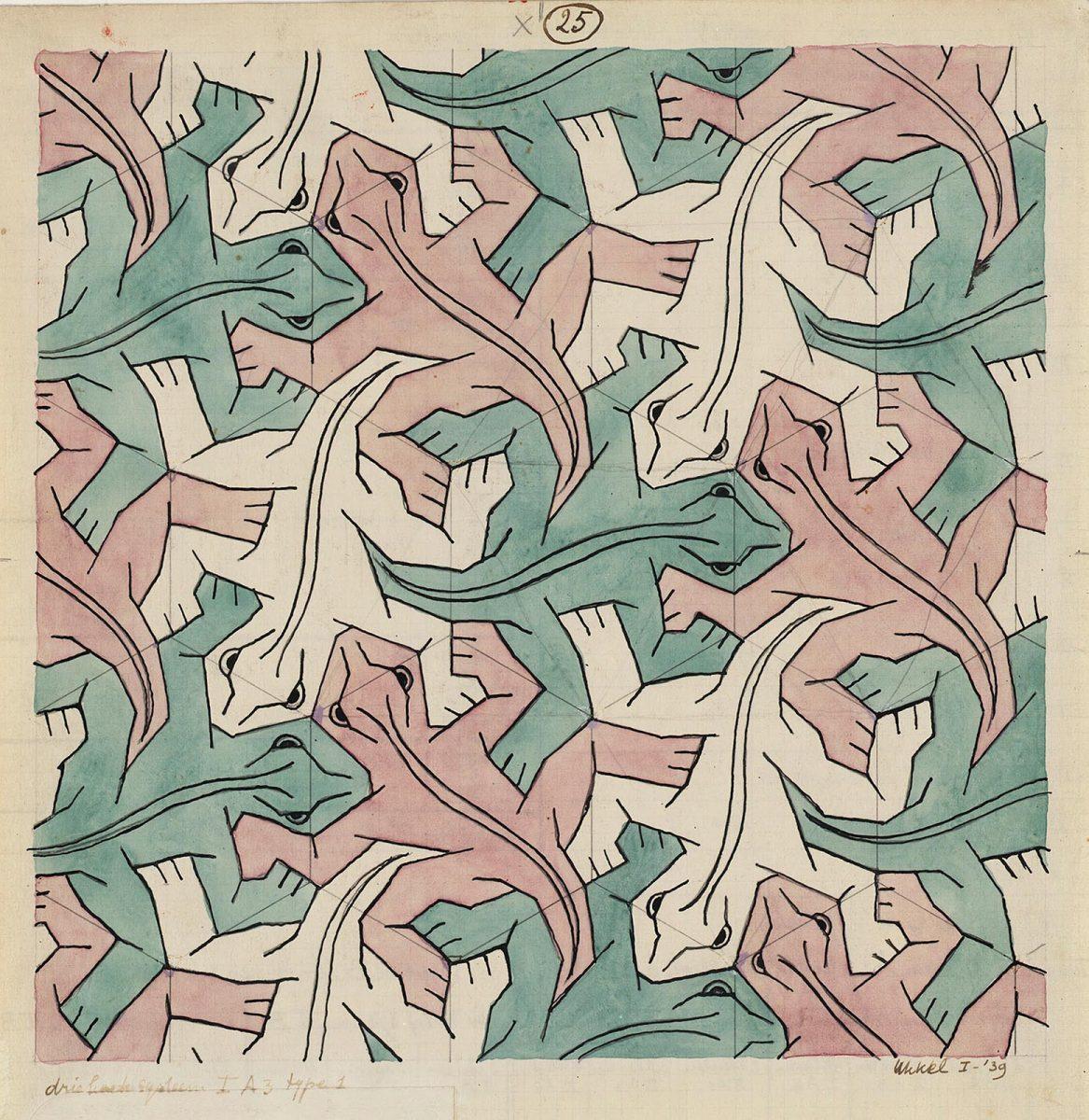
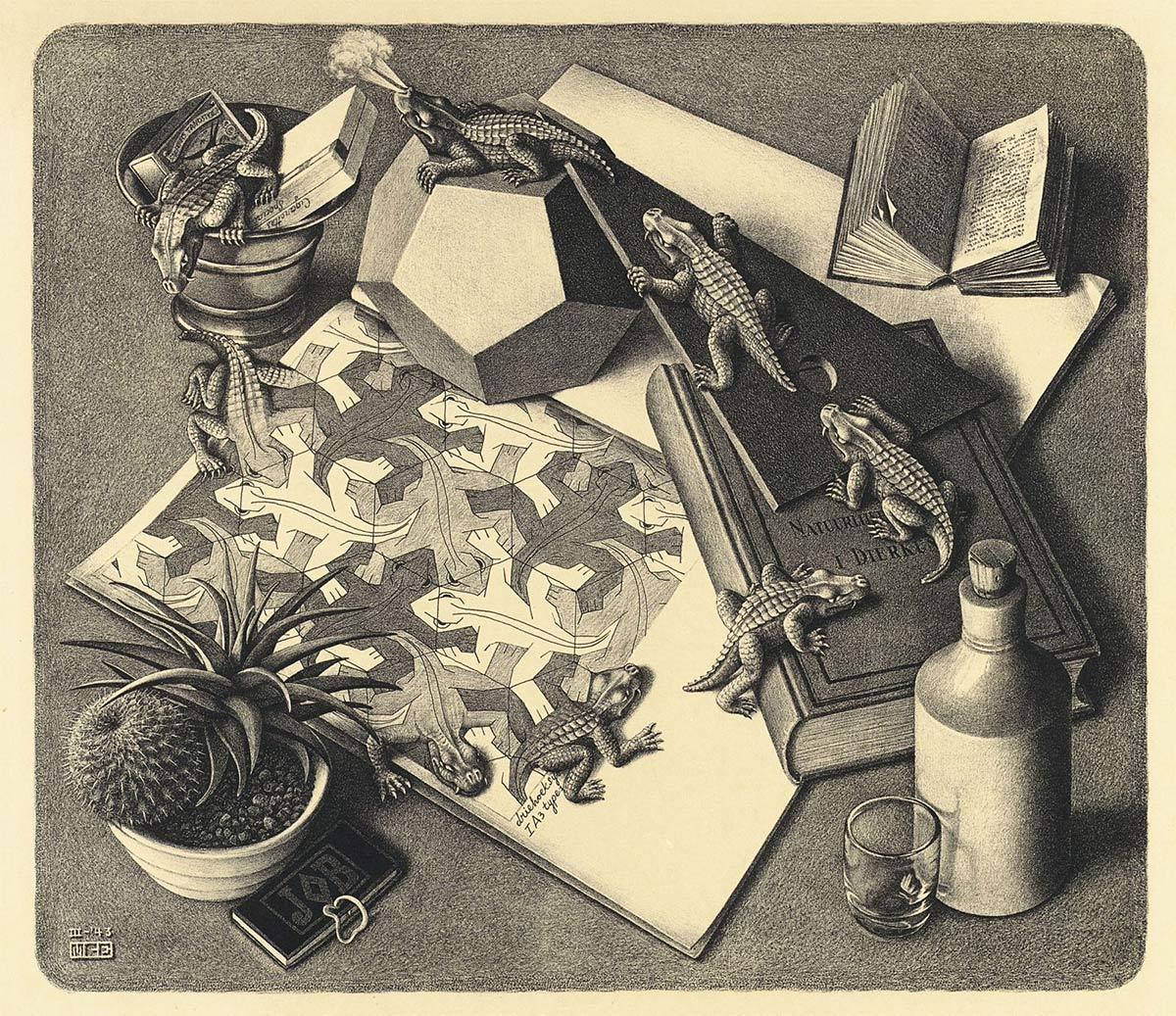
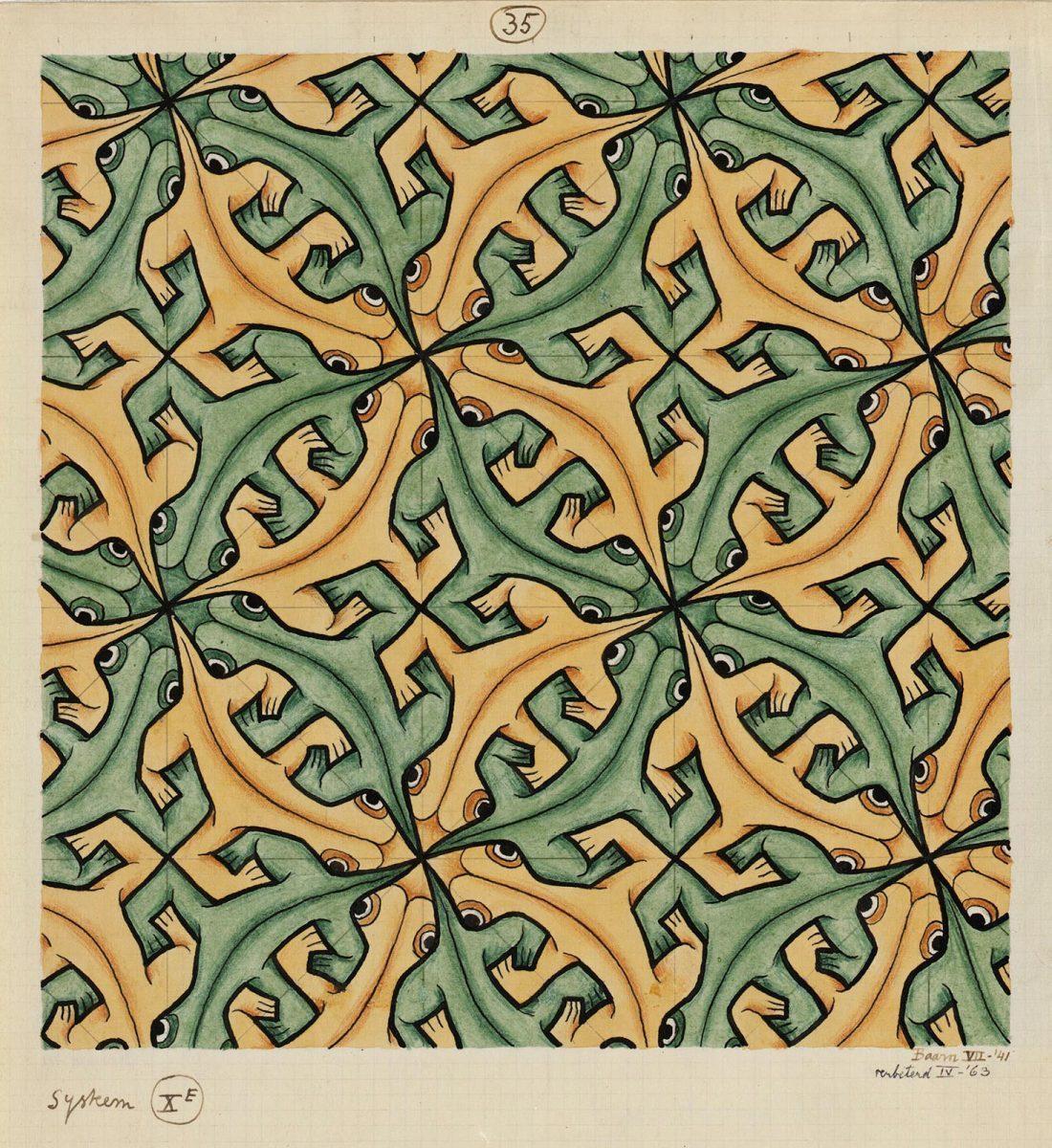
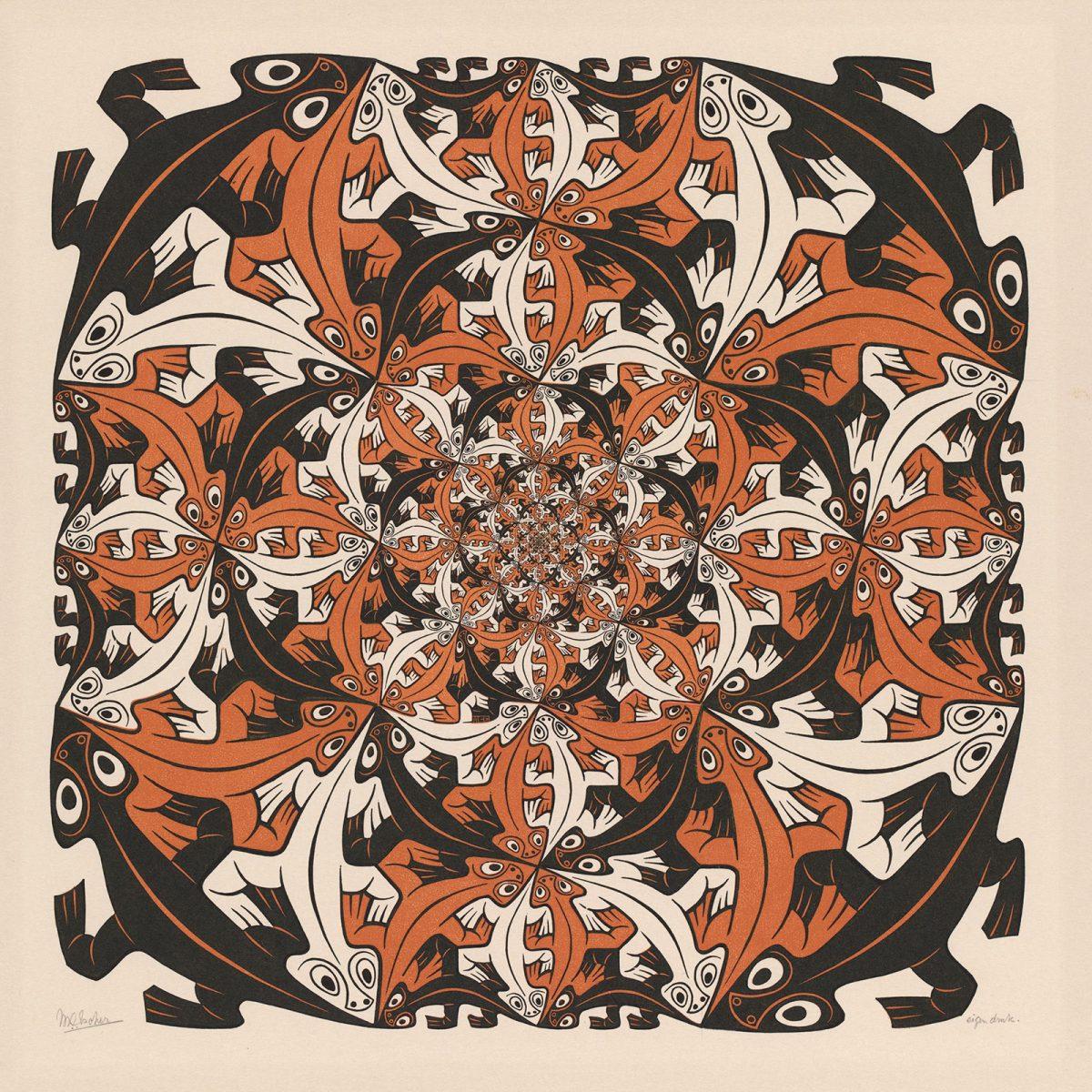
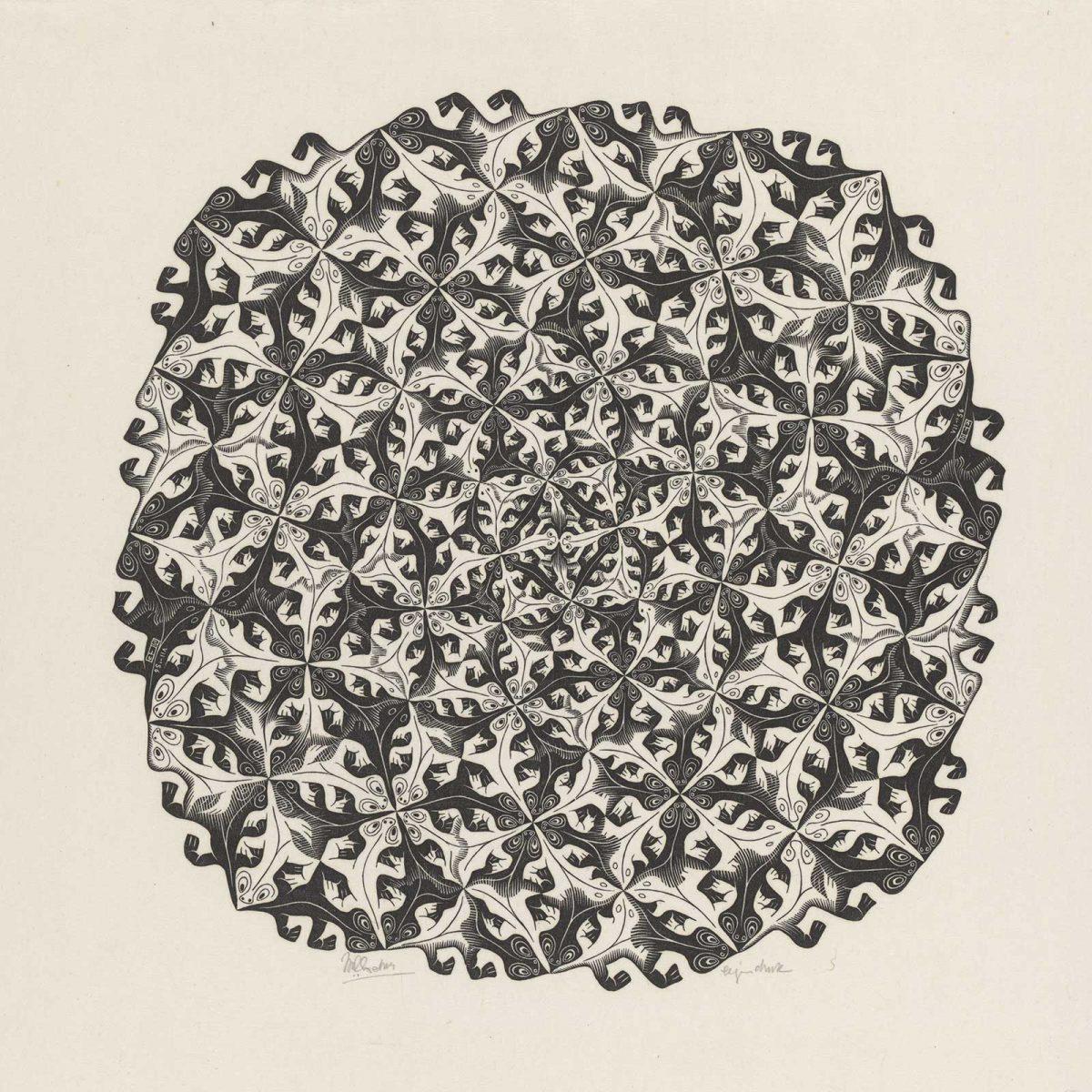
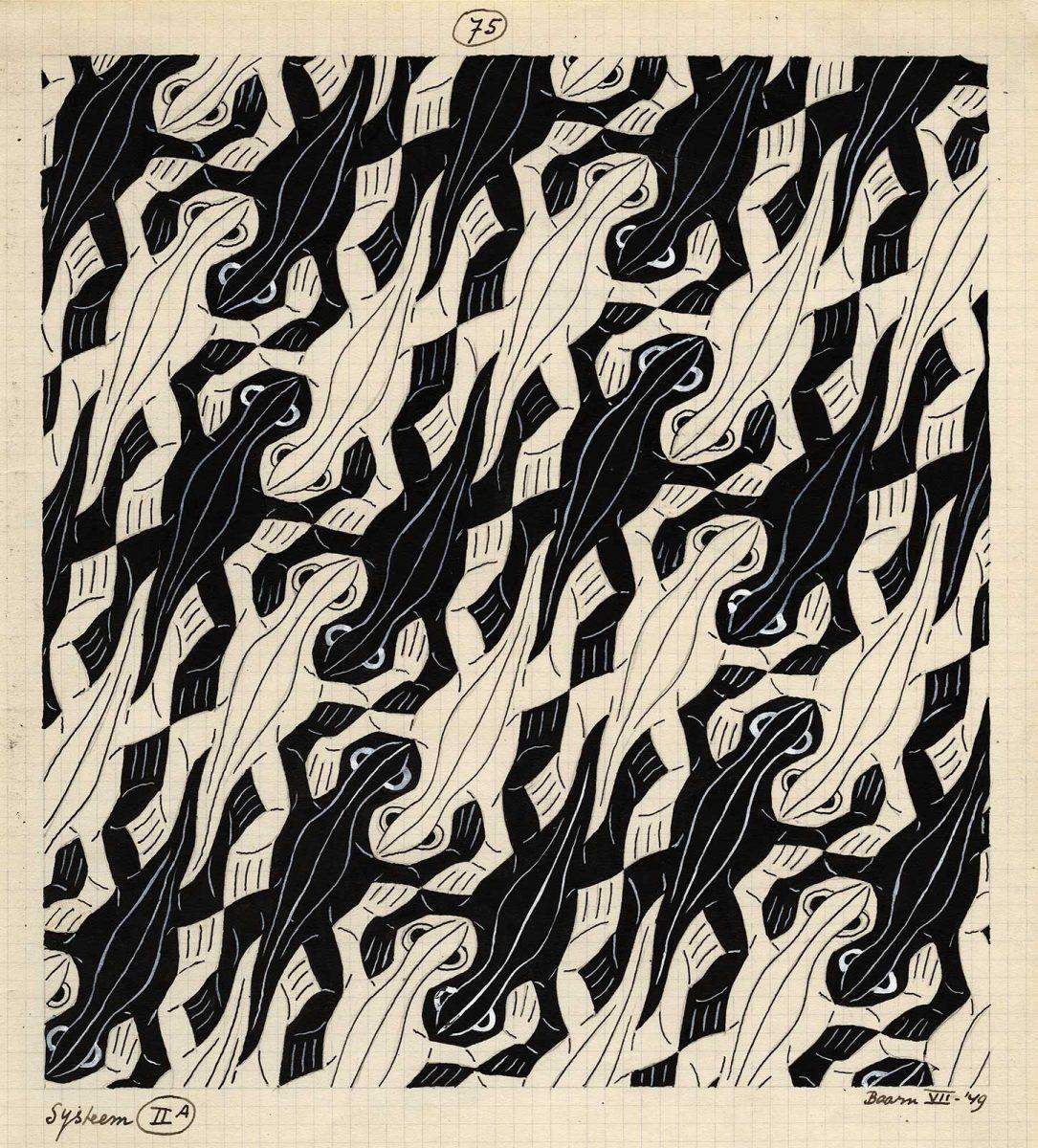
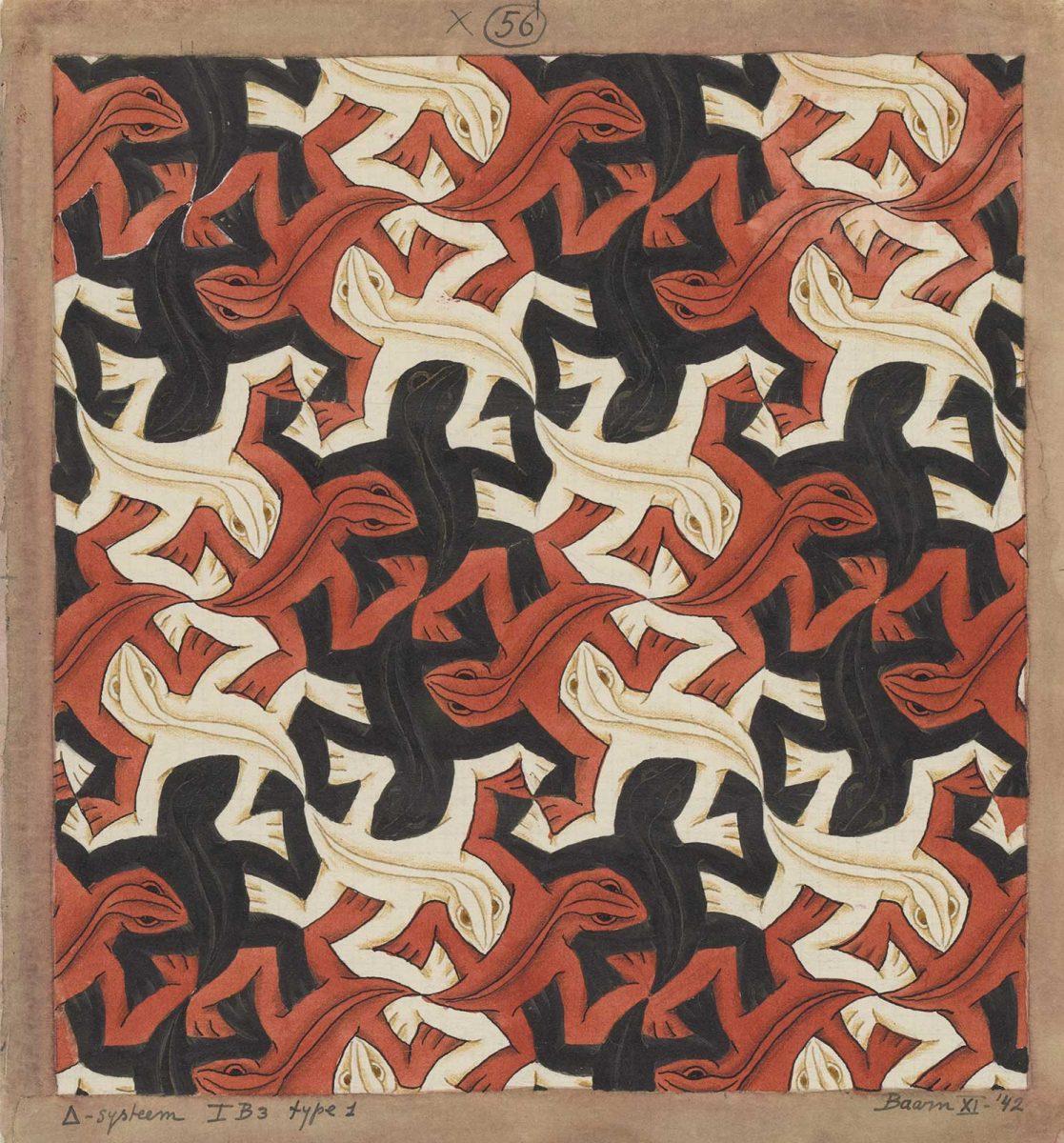
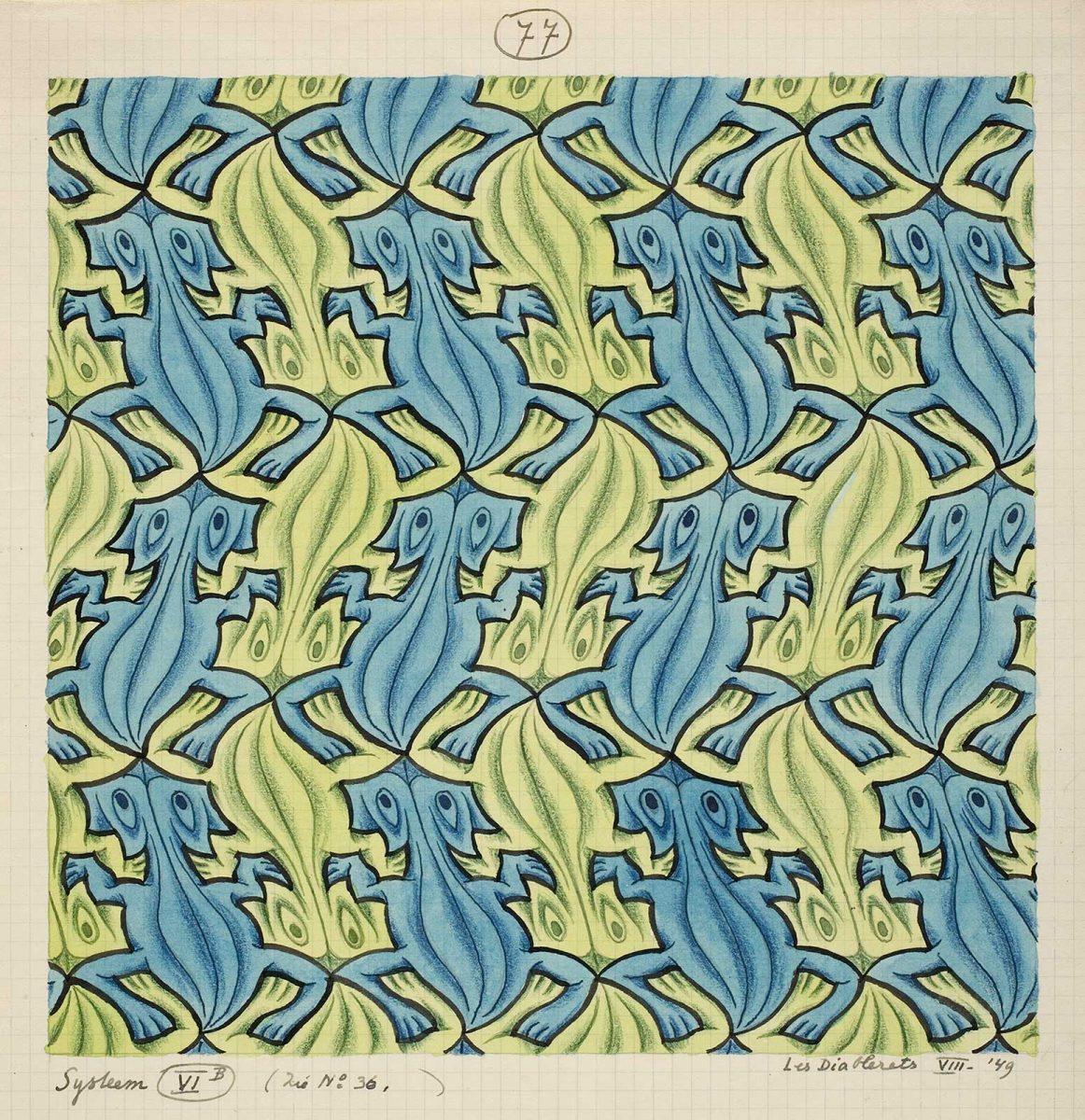
Incidentally, Escher did not give his regular division drawings a title. He sometimes referred to the reptilians as ‘congruent figures of reptilian form’, but didn't go beyond this description. In her book Visions of Symmetry, in which she elaborates on all the drawings from Escher's notebooks, author Doris Schattschneider does go beyond it. She talks about angels, devils, birds, fish, frogs, snakes, shells, insects and lizards. The nomenclature goes against Escher’s somewhat more rigid approach, but it does make it a lot easier to identify and talk about them.
More Escher today

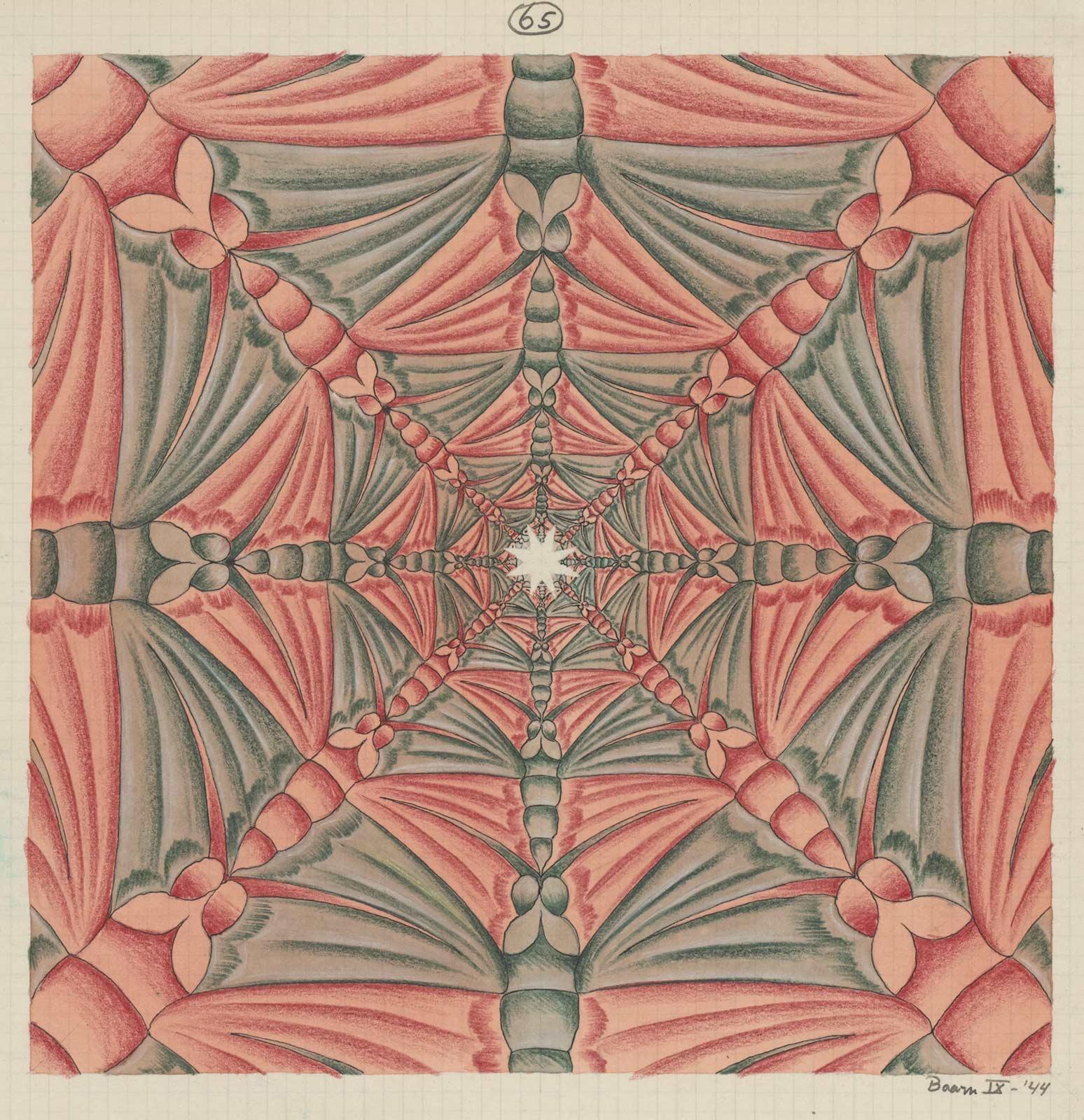
A tunnel of butterflies, 1944
